10 Key Facts About Madrid’s Santiago Bernabéu Stadium
There’s a reason travelers with even a tiny interest in soccer end up talking about the Santiago Bernabéu Stadium. The place has been the home of Real Madrid since the 1940s, and generations of fans have watched legends build entire careers on that field.
What makes the stadium so interesting is the amount of history packed into one spot. Let’s talk about 10 facts that show why the Bernabéu has stayed at the center of the soccer world for so long.
The Name
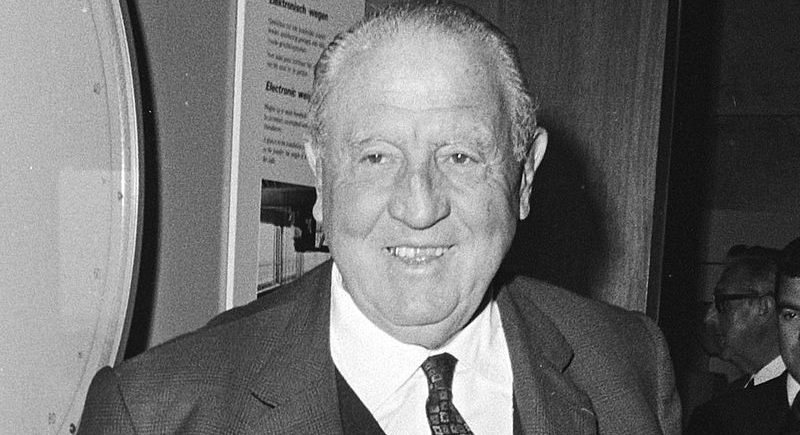
Credit: Wikimedia Commons
The stadium carries the name of Santiago Bernabéu, a former player, coach, and president whose impact shaped Real Madrid’s rise. He played in the 1920s, coached briefly in the 1920s, and then assumed the presidency in 1943. His leadership lasted 34 years and helped turn the club into a global powerhouse.
A Massive Capacity

Credit: Wikimedia Commons
More than 83,000 people can fill the seats, which places the stadium among the largest in Europe. Average crowds hover around 74,000 during regular games.
Having A Hybrid Pitch

Credit: Wikimedia Commons
A mix of natural grass and synthetic fibers was installed in 2004 to maintain a stable playing surface throughout the season. It helps the turf withstand periods of heavy use, which is a common challenge for top-level clubs.
Construction Push That Started in 1944
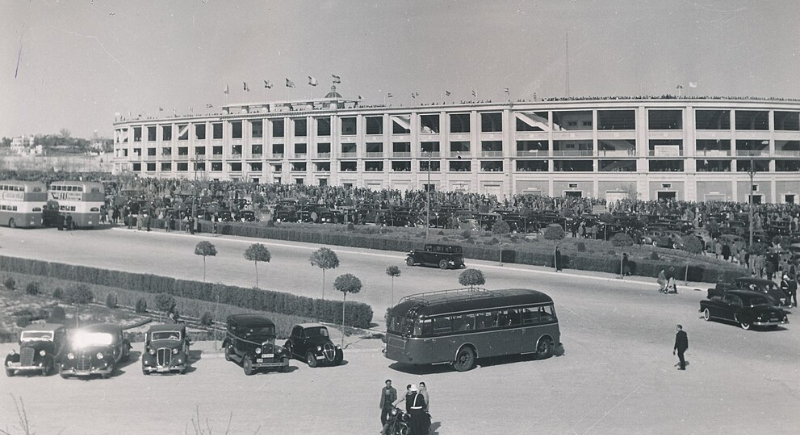
Credit: Wikimedia Commons
Construction of the stadium began after Real Madrid secured financing and purchased the land in 1944. The architects, Manuel Muñoz Monasterio and Luis Alemany Soler, designed a structure that could hold more than 75,000 people at the time. Work moved quickly, and fans were inside the new venue by 1947.
A Winning First Match
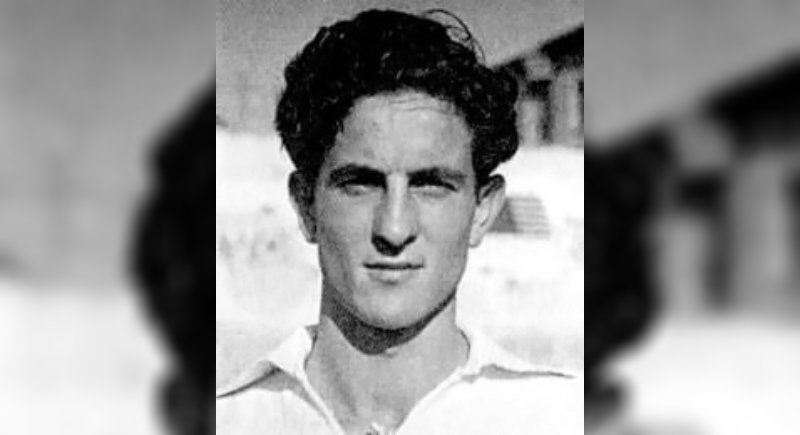
Credit: Wikimedia Commons
When Real Madrid finally stepped onto the field in 1947, the team secured a 3-1 win over Portuguese side Os Belenenses. Sabino Barinaga became the first player to score in the new stadium.
Capacity Surge in the 1950s
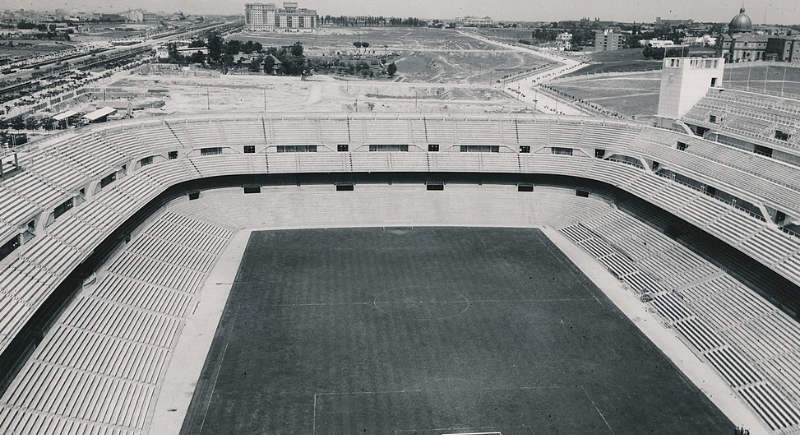
Credit: Wikimedia Commons
Renovations in 1955 pushed the stadium’s capacity to more than 125,000 people. The upgrade briefly gave it the title of Europe’s biggest stadium and set the stage for some massive crowds, including famous matches with attendance well above 100,000.
Home for a Museum
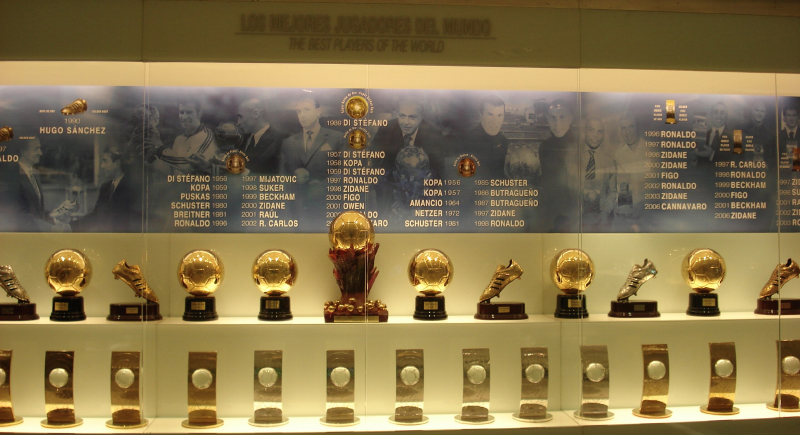
Credit: Wikimedia Commons
Fans can walk through the Real Madrid Museum inside the stadium, which opened in 1999. Trophies, jerseys, boots, and displays trace the club’s long history. More than 15 million people have taken the tour.
The Walk of Legends
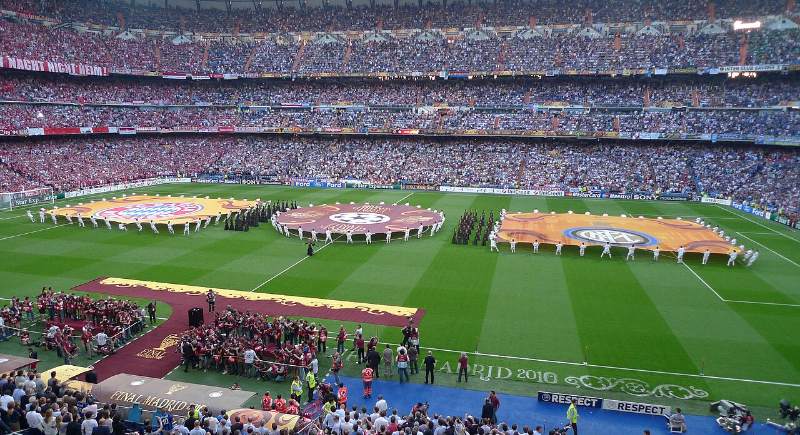
Credit: Wikimedia Commons
Another stop on the tour is the Walk of Legends, where plaques and statues honor standout Real Madrid players. Visitors follow a route around the stadium and pass names connected to different eras.
Constant Renovation And A New Roof

Credit: Wikimedia Commons
Renovations completed in 2019 cost approximately $435 million and introduced upgraded hospitality areas, along with a new LED lighting system. A retractable roof was added in 2023. The roof covers an area of more than 17,000 square meters and opens or closes in approximately 15 minutes.
Big Moments Beyond Soccer
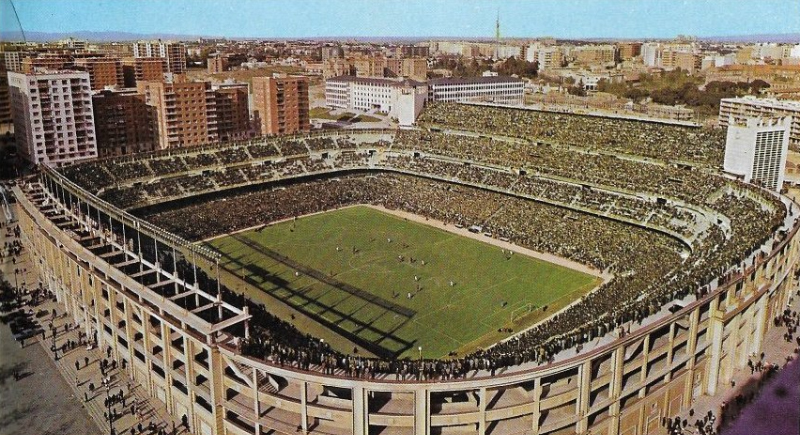
Credit: Wikimedia Commons
The Bernabéu hosted the 1982 World Cup Final, where Italy defeated West Germany 3-1. Concerts by U2, Bruce Springsteen, The Rolling Stones, and Madonna have turned the venue into a music landmark. Four Champions League and European Cup finals have also taken place there. The stadium hosted the first-ever regular-season NFL game in Spain on November 16, 2025.